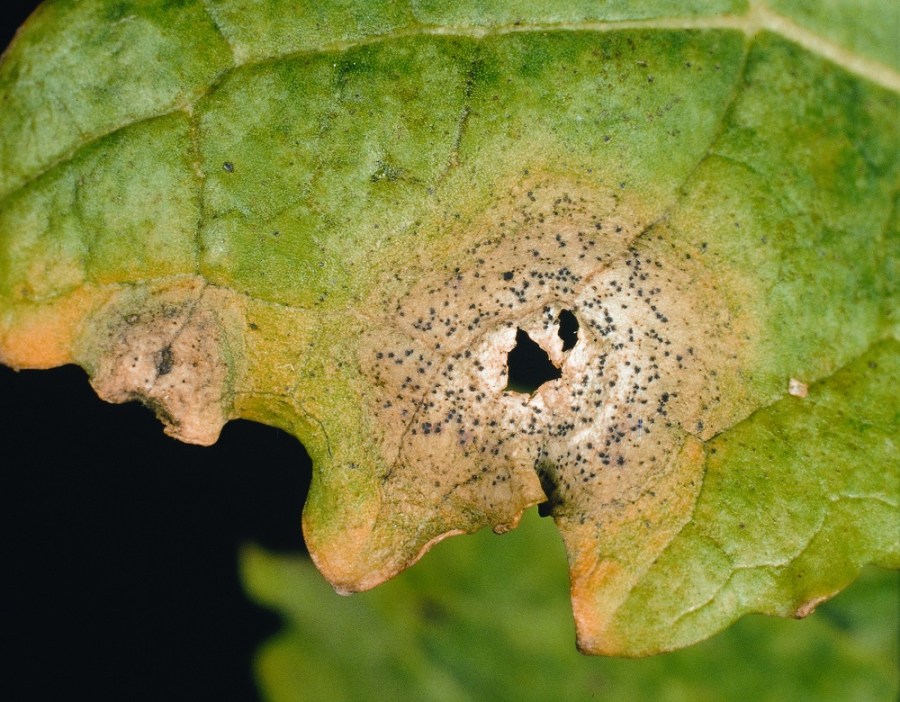Some winter oilseed rape may already have 10% of the crop showing phoma symptoms and need treating, according to AHDB’s forecast for the disease. Charlotte Cunningham reports.
Compiled by Rothamsted Research, the 2020 forecast reveals a wide range of predicted dates (13 Sept to 10 Nov) for crops to reach this threshold across the UK.
But compared with 2019, most sites (19/29) are likely to reach the threshold earlier. In fact, the 2020 forecast predicted eight sites would reach it in Sept, in contrast to just two sites in 2019.
Catherine Harries, who manages disease research at AHDB, said: “Phoma spores mature on stubble – a process that is favoured by warm, wet weather. Many sites monitored experienced such conditions in 2020, so it’s important to look for symptoms in the field, especially when the local forecast suggests the threshold date is near. Backing up the forecast findings, we’ve received reports of early-sown crops showing phoma symptoms.”
About the phoma forecast
Temperature and rainfall information (1 Jul to 26 Sept) is used to simulate the development of Leptosphaeria maculans – a key pathogen responsible for phoma leaf spot and phoma stem canker.
Accounting for subsequent crop infection, the forecast predicts the date when 10% of OSR plants could potentially show symptoms of phoma leaf spot. This level of infection relates to a treatment threshold for varieties with lower disease ratings (7 and below) for stem canker.
10 top tips for phoma management
- Infected crop debris is the main source of infection – use cultivation and rotation to reduce disease pressure.
- Select varieties with strong resistance to diseases, including phoma (see the AHDB Recommended Lists).
- During autumn, monitor oilseed rape for phoma leaf spots (prioritise susceptible varieties and small crops).
- Note that warm and wet conditions favour the disease. Most crops breach treatment thresholds in Oct, although it may be earlier (check the AHDB forecast).
- A fungicide applied as close as possible to a threshold helps maximise its effect.
- Check AHDB fungicide performance data, which includes information on product efficacy against phoma.
- Treat varieties with lower resistance ratings for stem canker (7 and below) and small crops first, when 10–20% of plants have phoma leaf spot.
- Only treat varieties with high resistance ratings for stem canker (8 to 9) if more than 20% of plants have phoma leaf spot.
- When reinfection occurs, consider a second spray – typically, four to ten weeks after the first spray.
- Adjust spray programmes to account for any late-autumn fungicide (typically, Nov) required for light leaf spot control.
For more information, visit: ahdb.org.uk/phoma-leaf-spot-forecast




